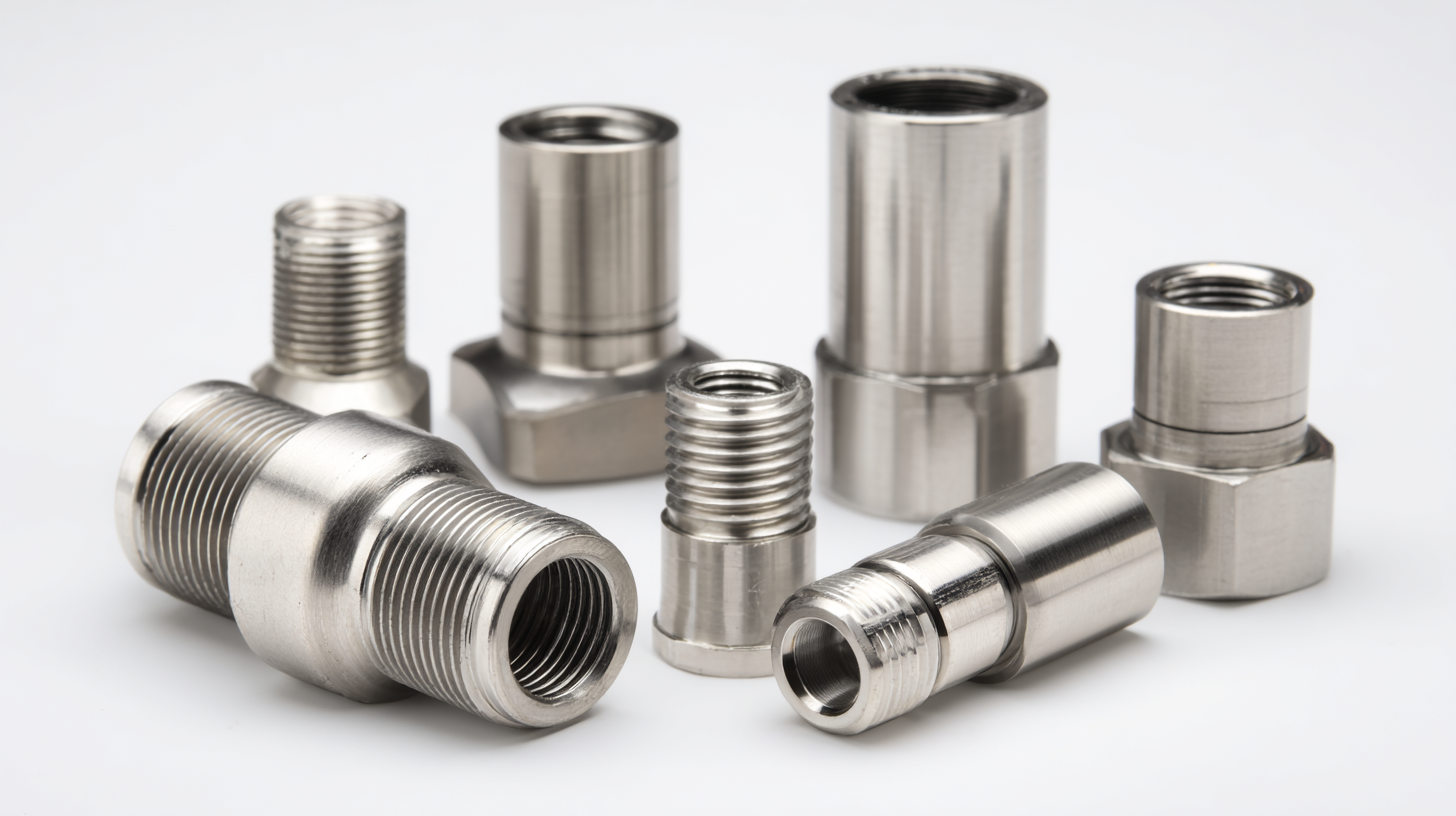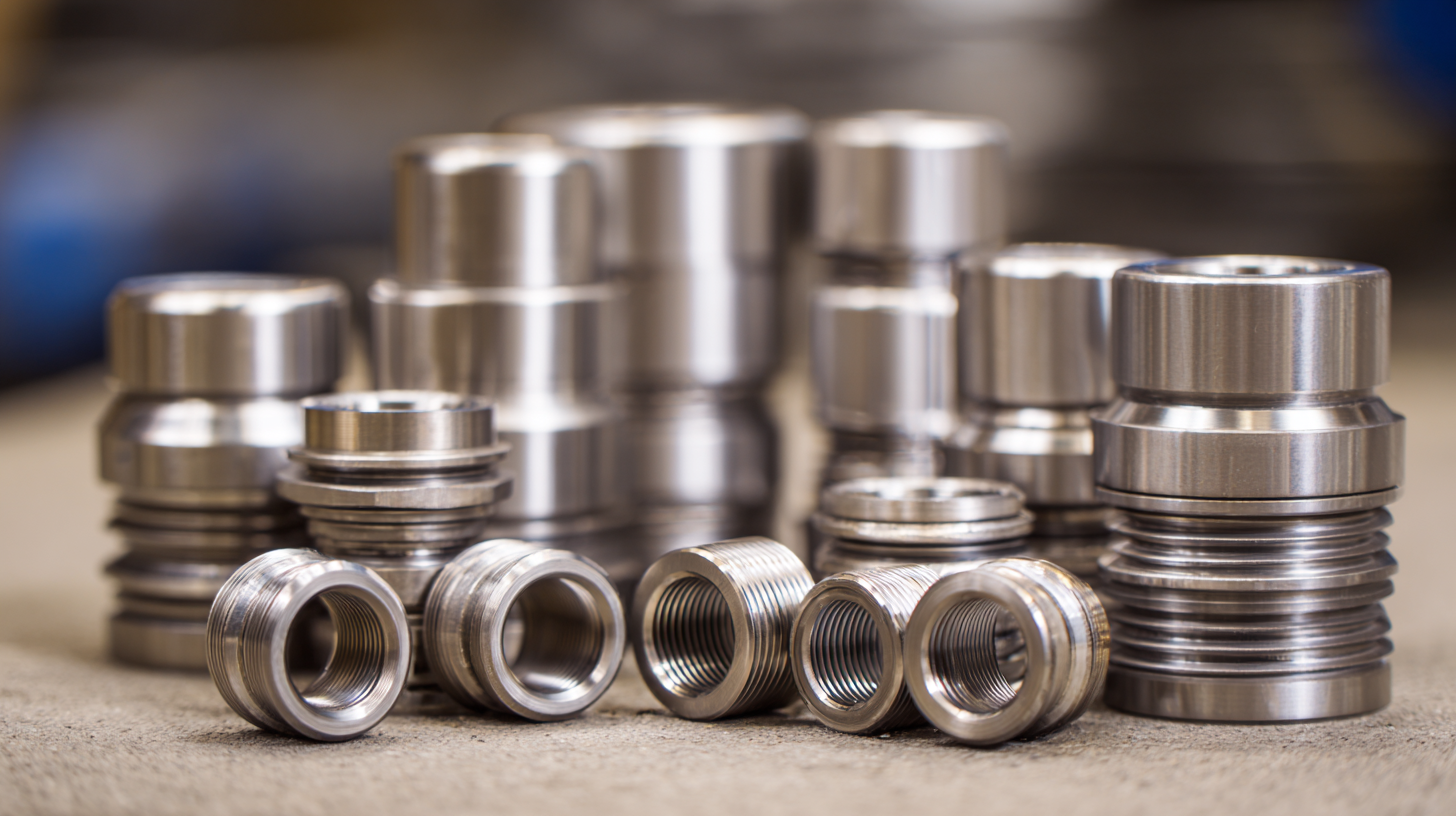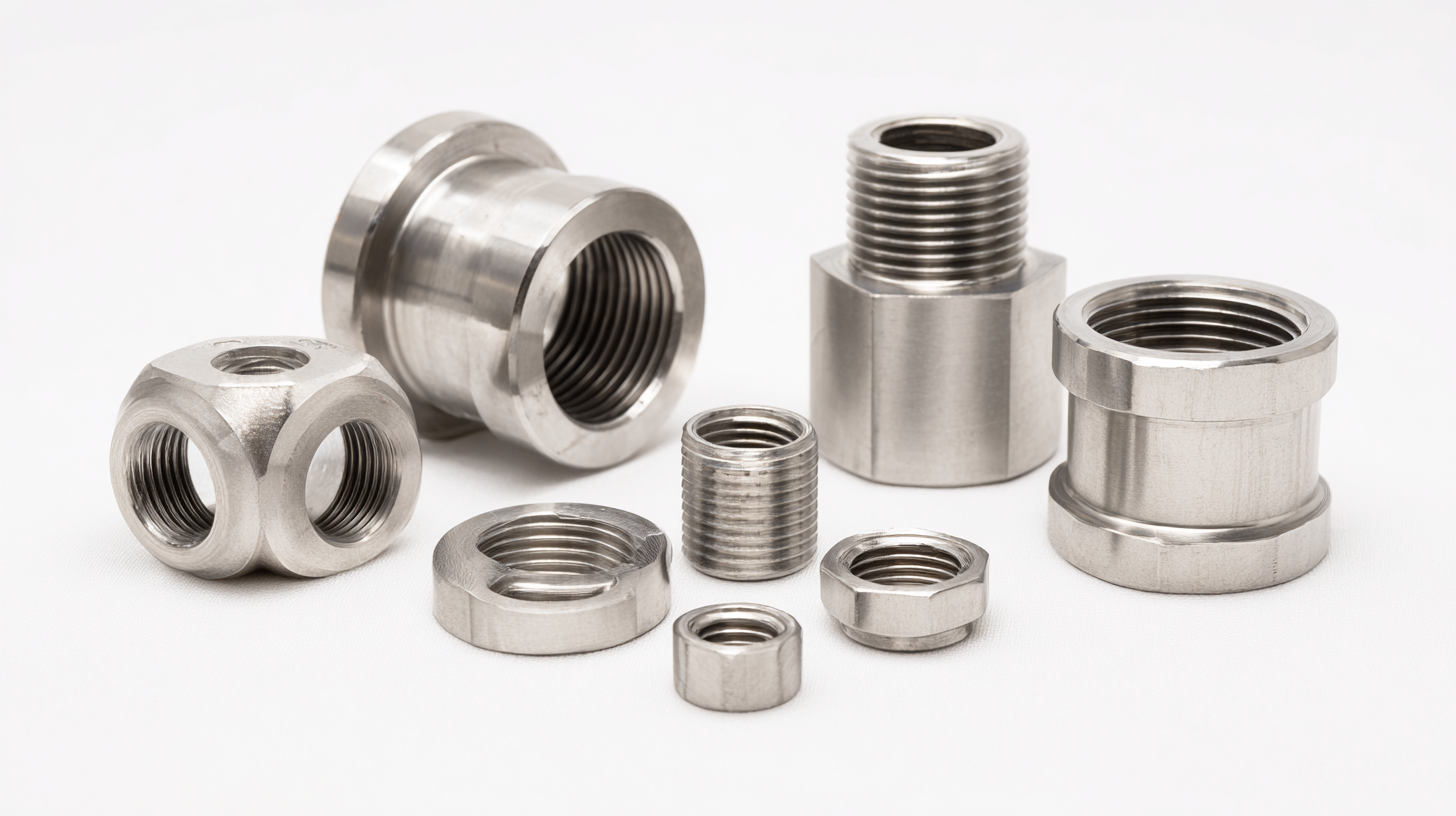How to Choose the Right Stainless Steel Fittings for Your Project
When embarking on a project that requires the use of stainless steel fittings, making the right choice can significantly impact the overall success and durability of your work. With an array of options available, it can be overwhelming to determine which fittings will best suit your specific needs. Whether you're tackling plumbing installations, structural reinforcements, or creative design projects, understanding the key factors involved in selecting stainless steel fittings is essential.

In this blog, we’ll explore essential tips and guidelines to help you navigate the selection process effectively. From compatibility with different systems to considerations of corrosion resistance, this guide aims to equip you with the knowledge needed to make informed decisions. Join us as we delve into the nuances of choosing the perfect stainless steel fittings for your project, ensuring that your investment yields the best results.
Understanding the Different Types of Stainless Steel Alloys for Fittings
 When selecting the right stainless steel fittings for your project, it’s essential to understand the various types of stainless steel alloys available. Austenitic stainless steels, such as 304 and 316, are among the most commonly used alloys. These alloys are favored for their excellent corrosion resistance and high ductility. According to a report by the International Stainless Steel Forum (ISSF), 304 stainless steel is particularly suited for environments with high temperatures and moderate corrosive stresses, making it ideal for many industrial applications.
When selecting the right stainless steel fittings for your project, it’s essential to understand the various types of stainless steel alloys available. Austenitic stainless steels, such as 304 and 316, are among the most commonly used alloys. These alloys are favored for their excellent corrosion resistance and high ductility. According to a report by the International Stainless Steel Forum (ISSF), 304 stainless steel is particularly suited for environments with high temperatures and moderate corrosive stresses, making it ideal for many industrial applications.
However, when dealing with more aggressive environments, a higher grade like 316 stainless steel is recommended. This alloy contains molybdenum, which enhances its resistance to pitting and crevice corrosion in chloride environments. The same ISSF report indicates that 316 stainless steel’s performance in marine applications or chemical processing is significantly improved due to this composition, providing a crucial advantage in durability and lifespan. Understanding these differences helps ensure that you choose the appropriate alloy that meets both the mechanical and environmental demands of your specific project.
Key Factors to Consider When Selecting Stainless Steel Fittings for Durability
When selecting stainless steel fittings for your project, durability should be at the forefront of your decision-making process. Stainless steel fittings are designed to withstand harsh environments and resist corrosion, making them suitable for various applications, particularly in industries such as oil and gas, where corrosion under insulation can be a critical concern. The selection of fittings influenced by specific project requirements, such as pressure ratings and temperature tolerances, can significantly impact the longevity and reliability of your system.
Moreover, consider the type of stainless steel alloy used in the fittings, as this directly correlates with their overall durability. Alloys such as 316L provide enhanced resistance to pitting and crevice corrosion, particularly in settings exposed to chlorides. Understanding the environmental conditions and potential corrosive elements your fittings will encounter is essential in choosing the right product. By focusing on these key factors, you can ensure that your stainless steel fittings will perform optimally, leading to a more robust and enduring installation.
The Importance of ASTM Standards in Stainless Steel Fittings Selection
When selecting stainless steel fittings for your project, understanding ASTM standards is crucial. The American Society for Testing and Materials (ASTM) provides a set of specifications that ensure fittings are manufactured to meet specific quality and performance criteria. Adhering to these standards not only guarantees the durability of the fittings but also their compatibility with various applications, especially in harsh environments.
When choosing stainless steel fittings, consider the environment they will be exposed to. Fittings used in marine applications require higher corrosion resistance, which is where standards like ASTM A312 for seamless stainless steel pipe come into play. Ensure that the fittings you select are certified and comply with ASTM specifications tailored to your project’s needs.
Additionally, always check the fitting’s design and pressure rating before purchase. This ensures that the fittings will handle the operational pressures of your specific application. Look for suppliers who can provide certification of compliance with relevant ASTM standards, as this guarantees not only the quality but also the safety of your installation.
How to Choose the Right Stainless Steel Fittings for Your Project - The Importance of ASTM Standards in Stainless Steel Fittings Selection
| Fitting Type | Material Grade | ASTM Standard | Application | Temperature Range (°C) |
|---|---|---|---|---|
| Elbow | A304 | ASTM A312 | Piping systems | -196 to 800 |
| Tee | A316 | ASTM A403 | Chemical processing | -196 to 600 |
| Reducer | A304 | ASTM A403 | Water systems | -196 to 870 |
| Cap | A316L | ASTM A774 | Food and beverage | -196 to 310 |
| Flange | A304 | ASTM A182 | Oil and gas | -50 to 400 |
Evaluating Corrosion Resistance: A Critical Aspect in Choosing Stainless Steel Fittings
When selecting stainless steel fittings for your project, evaluating corrosion resistance is paramount. Stainless steel is often chosen for its durability and strength; however, not all grades offer the same level of resistance to corrosion. Factors such as the environment in which the fittings will be used—exposure to moisture, chemicals, or high temperatures—play a crucial role in determining the best material. For example, 316 stainless steel is commonly recommended for marine applications due to its superior resistance to saltwater environments, whereas 304 stainless steel may suffice in less corrosive settings.
In addition to the environmental considerations, it's essential to understand the specific types of corrosion that may occur. Pitting, crevice corrosion, and stress corrosion cracking are all concerns that can arise with inadequate material selection. Evaluating the potential for these risks can help guide your choice. A thorough assessment of the application's demands, coupled with consultations from materials engineers or suppliers, can ensure that the stainless steel fittings chosen will offer longevity and reliable performance throughout their service life.
Corrosion Resistance of Different Stainless Steel Grades
Cost vs. Quality: Making Informed Decisions on Stainless Steel Fittings for Your Project
When selecting stainless steel fittings for your project, the balance between cost and quality is crucial. Many project managers face the challenge of finding fittings that meet their technical requirements without exceeding budget constraints. While cheaper options may seem appealing initially, they often come with hidden costs such as increased maintenance, reduced lifespan, and potential failure risks. Investing in high-quality stainless steel fittings not only ensures long-term reliability but also minimizes unexpected expenses down the road.

Quality fittings are designed to withstand the rigors of various environments and maintain their integrity over time. They provide better resistance to corrosion, especially in harsh conditions, which is essential for projects in industries like construction, marine, and food processing. When making your choice, consider the material's grade, compatibility with your project’s needs, and the manufacturer’s reputation. Ultimately, by prioritizing informed decisions over mere cost-cutting, you can achieve a balance that safeguards both your investment and the success of your project.
Related Posts
-

10 Best Pressure Washer Hose Hacks for Ultimate Efficiency
-

Unlocking Efficiency with Pressure Washer Hose Reels to Enhance Productivity
-

Essential Checklist for Choosing the Right Sprayer Parts to Maximize Efficiency and Performance
-

7 Key Advantages of Using a High Pressure Hose Reel in Your Operations
-

Ultimate Guide to Choosing the Right Pressure Washer Hose for Your Cleaning Needs
-

Exploring Innovative Alternatives to Traditional Pressure Gauges in Industrial Applications